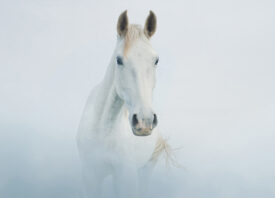Search this site
A Trailblazing Photography Collector Champions Black Artists


As We Rise: Photography from the Black Atlantic is now on view at the Peabody Essex Museum in Salem, Massachusetts.
In 1997, Dr. Kenneth Montague, a practicing dentist, created a gallery inside the halls of his Toronto home. He dedicated it to showcasing photographs by Black artists. “The first show was set up like a Sunday afternoon salon—really DIY projects,” he recalls in the new book As We Rise: Photography from the Black Atlantic, published by Aperture.
That unique wedge-shaped space soon gave rise to The Wedge Collection. The project grew from there: today, the hugely influential collection includes more than four hundred works, selections of which are now part of an exhibition at the Peabody Essex Museum in Massachusetts.
The book and exhibition, organized by Aperture, include many of the most important artists and images in the history of photography, with selections from Carrie Mae Weems, Deana Lawson, Jamel Shabazz, Seydou Keïta, Malick Sidibé, and dozens more. The one hundred works, featuring Black people and made by Black artists living in Canada, the US, the Caribbean, Great Britain, South America, and the African continent, intersect across three main themes: community, identity, and power.
In an interview with the curator and photo editor Liz Ikiriko, Dr. Montague remembers his mother taking him and his siblings on trips to art museums and historical societies in the 1970s. He recalls seeing one photograph—James Van Der Zee’s Couple in Raccoon Coats, a portrait of a glamorous Black couple at the height of the Harlem Renaissance—and feeling like he recognized something he hadn’t seen before in television and film. He was just ten years old at the time.
That revelatory moment would follow him throughout the decades, inspiring him to seek out photographs by Black artists that accurately reflected Black life with a similar sense of consent and care—across continents and generations. Couple in Raccoon Coats is now part of the Wedge Collection; it was one of the first Dr. Montague bought. You can see the glittering silver gelatin print up close at the Peabody Essex Museum.
The influence of both of Dr. Montague’s parents runs throughout the collection, beginning with those early museum trips organized by his mother. The title “As We Rise” comes from his father, who used the phrase “lifting as we rise” to describe the importance of uplifting others through one’s own triumphs and successes. While many of these artists are now household names, Dr. Montague was one of the first collectors to recognize their work.
The spirit of collaboration and trust is a thread that ties together portraits by photographers who never got a chance to meet, from the very beginning of the Harlem Renaissance to those working during the Black Renaissance of today. In every portrait, Black people show up as they are and as they wish to be seen, and those wishes are honored like promises.
Dr. Montague has spent decades traveling the world and meeting artists, and he shares many of those stories within the book and exhibition. While visiting Malick Sidibé in Mali, he also saw Oumar Ly. He writes, “I reveled in the magnitude of the moment: two of the greatest portrait photographers of their day, meeting for the first time.”
The Wedge Collection draws its name from the literal space where it all started in Dr. Montague’s living room. But it also contains another layer of meaning for the collector. As he explains in conversation with Liz Ikiriko, his goal has always been to create space—that is, to build a “wedge”—for historically underrepresented and unrecognized artists within the canon of art history.
As this exhibition proves, that space need not be confined to the four walls of a living room or even a museum. It’s a living, breathing expanse as vast as the knowledge, experience, and imagination of the artists represented within. Similarly, the stories contained within the 184 pages of this magnificent book stretch far beyond the frame, spanning thousands of miles.
As We Rise: Photography from the Black Atlantic is on view at the Peabody Essex Museum in Massachusetts through December 31st, 2023.







From the series Ke Lefa Laka: Her-story, 2013

Further reading:
• From Boy to Man: Samuel Fosso’s Journey Through Self-Portraits
• Jamel Shabazz Reflects of the Power of Fashion Photography
• Harlem Through the Eyes of James Van Der Zee



